Finding the right words to communicate effectively can make a huge difference in how your message is received. Check This Out is a phrase many people use to draw attention to something exciting, important, or interesting. However, sometimes it can feel casual or overused. Using thoughtful alternatives can make your messages more engaging, personal, and meaningful while still capturing attention. In this article, we’ll explore 20 other ways to say “Check This Out”, along with meanings, scenarios, tone, and examples for each.
What Does “Check This Out” Mean?
The phrase “Check This Out” is often used to ask someone to notice or pay attention to something interesting, surprising, or useful. It conveys curiosity and excitement and is usually informal. The phrase can be used in conversations, texts, emails, social media, and presentations to highlight content or ideas that the speaker wants others to see.
Is It Professional/Polite to Say “Check This Out”?
While “Check This Out” is friendly and engaging, it is generally considered informal. In professional or formal communication, it is better to use alternatives like “Please take a look”, “I’d like to show you”, or “I recommend reviewing”. Using these variations can help maintain a polite, professional tone while still drawing attention effectively.
Synonyms For “Check This Out”
- Take a Look at This
- Have a Look
- Give This a Read
- Look Into This
- You’ve Got to See This
- Have You Seen This
- Take a Peek
- Check This Out for Yourself
- Don’t Miss This
- You Should Look at This
- Feast Your Eyes on This
- Have a Gander
- Scope This Out
- Give This a Lookover
- Peep This
- Give This a Glance
- Take a Gaze
- Explore This
- Inspect This
- Notice This
1. Take a Look at This
Meaning: Asking someone to notice or examine something closely.
Scenario: Sending an interesting article to a colleague.
Tone: Friendly, informative, professional.
Examples:
- Take a look at this article I found about productivity tips that really simplify your workflow.
- I think you should take a look at this report before tomorrow’s meeting because it’s very detailed.
- Take a look at this amazing artwork created by our team; it’s truly inspiring.
- Here’s a project proposal, take a look at this draft and let me know your thoughts.
- Take a look at this tutorial that can help improve your coding skills significantly.
Explanation: This phrase is polite, clear, and easy to use in professional or casual settings. It encourages engagement without sounding pushy.
2. Have a Look
Meaning: Inviting someone to examine or consider something.
Scenario: Sharing a photo or document with a friend or colleague.
Tone: Casual, friendly, approachable.
Examples:
- Have a look at this new app I downloaded; it has fantastic features.
- I thought you might like to have a look at this summary I prepared for our meeting.
- Have a look at this interesting video that explains the concept very clearly.
- Please have a look at this menu; there are many new dishes available.
- Have a look at this design; I’d love your honest feedback before finalizing it.
Explanation: “Have a Look” is slightly more casual than “Take a Look,” making it perfect for informal conversations while still showing care in presentation.
3. Give This a Read
Meaning: Suggesting someone read a document, article, or message.
Scenario: Sending an informative email or article link.
Tone: Encouraging, professional, informative.
Examples:
- Give this a read; it explains how to manage time more efficiently at work.
- I thought you might want to give this article a read before our discussion.
- Give this a read if you are interested in improving your photography skills.
- I recommend giving this blog post a read because it provides helpful insights.
- Please give this a read; it has detailed instructions for the new software update.
Explanation: This phrase emphasizes reading and comprehension and is ideal for written communication.
4. Look Into This
Meaning: Encouraging someone to explore or investigate further.
Scenario: Pointing someone to research or analyze a topic.
Tone: Curious, investigative, slightly formal.
Examples:
- Look into this case study to understand the latest trends in marketing.
- You should look into this software tool; it might simplify your workflow.
- Look into this new research paper; it provides valuable insights for your project.
- Can you look into this proposal and share your feedback before submission?
- Look into this website for resources that could help improve your skills.
Explanation: “Look Into This” conveys curiosity and encourages a deeper understanding or investigation of the topic.
5. You’ve Got to See This
Meaning: Expressing excitement or urgency about sharing something interesting.
Scenario: Sharing a video or photo with friends.
Tone: Enthusiastic, casual, friendly.
Examples:
- You’ve got to see this funny video; it will definitely make you laugh.
- You’ve got to see this breathtaking landscape I captured during my trip.
- You’ve got to see this new gadget; it’s incredibly innovative.
- You’ve got to see this amazing performance by our team at the event.
- You’ve got to see this infographic; it explains the data so clearly.
Explanation: This phrase conveys excitement and grabs immediate attention, perfect for casual or informal sharing.
6. Have You Seen This?
Meaning: Asking if someone has noticed something interesting or noteworthy.
Scenario: Sharing a trending post or news update.
Tone: Curious, friendly, casual.
Examples:
- Have you seen this viral video going around on social media?
- Have you seen this new study about healthy eating habits?
- Have you seen this amazing DIY project someone shared online?
- Have you seen this news article about the upcoming tech conference?
- Have you seen this artwork? It’s gaining a lot of attention recently.
Explanation: “Have You Seen This” invites conversation and is perfect for casual or social contexts.
7. Take a Peek
Meaning: Asking someone to glance at something quickly or sneakily.
Scenario: Sharing something visually appealing or fun.
Tone: Playful, informal, friendly.
Examples:
- Take a peek at this cute puppy video; it’s heartwarming and adorable.
- Take a peek at this behind-the-scenes photo from the event yesterday.
- Take a peek at this unique product design before it launches publicly.
- Take a peek at this new feature added to the app recently.
- Take a peek at this quick guide for organizing your workspace efficiently.
Explanation: This phrase is playful and casual, making it ideal for social or informal messages.
8. Check This Out for Yourself
Meaning: Encouraging someone to experience or examine something personally.
Scenario: Recommending a website, article, or product.
Tone: Friendly, encouraging, persuasive.
Examples:
- Check this out for yourself and see how much easier it makes your daily tasks.
- I recommend you check this out for yourself to understand the concept better.
- Check this out for yourself and see why it’s receiving so much praise.
- You should check this out for yourself; the details are really impressive.
- Check this out for yourself and decide whether it fits your needs.
Explanation: This phrasing encourages personal engagement and emphasizes firsthand experience.
9. Don’t Miss This
Meaning: Urging someone to pay attention to something important or exciting.
Scenario: Highlighting a must-see article, video, or event.
Tone: Urgent, enthusiastic, friendly.
Examples:
- Don’t miss this tutorial; it can help improve your skills quickly.
- Don’t miss this amazing sale happening this weekend at the store.
- Don’t miss this webinar; it’s packed with useful tips and advice.
- Don’t miss this opportunity to join our exclusive workshop next week.
- Don’t miss this post; it shares vital information for all beginners.
Explanation: This phrase conveys urgency and excitement, motivating someone to act immediately.
10. You Should Look at This
Meaning: Suggesting someone consider something important or interesting.
Scenario: Sending helpful resources or examples.
Tone: Polite, advisory, friendly.
Examples:
- You should look at this guide; it can improve your project significantly.
- You should look at this new app; it’s designed to boost productivity efficiently.
- You should look at this recent research to support your presentation points.
- You should look at this photo collection; the details are beautifully captured.
- You should look at this case study; it demonstrates excellent problem-solving skills.
Explanation: “You Should Look at This” is a gentle, persuasive way to guide attention while remaining polite.
11. Feast Your Eyes on This
Meaning: Inviting someone to admire or enjoy something visually impressive.
Scenario: Sharing artwork, designs, or photos.
Tone: Enthusiastic, playful, informal.
Examples:
- Feast your eyes on this amazing digital painting created by a talented artist.
- Feast your eyes on this stunning landscape photo from our recent trip.
- Feast your eyes on this innovative architecture design featured in the magazine.
- Feast your eyes on this deliciously plated meal at the new restaurant.
- Feast your eyes on this creative animation; it’s truly captivating.
Explanation: This phrase emphasizes visual appeal and admiration, making it exciting and fun.
12. Have a Gander
Meaning: A playful way to suggest taking a look at something.
Scenario: Sharing something funny or quirky with friends.
Tone: Casual, humorous, friendly.
Examples:
- Have a gander at this hilarious comic strip; it’s really entertaining.
- Have a gander at this cute cat video; it will brighten your day.
- Have a gander at this interesting DIY project; it’s easy to follow.
- Have a gander at this unique invention someone shared online.
- Have a gander at this fun infographic; it’s visually appealing and informative.
Explanation: “Have a Gander” is playful, making it perfect for casual sharing or humor.
13. Scope This Out
Meaning: Encouraging someone to examine or check something interesting closely.
Scenario: Sharing resources, events, or opportunities.
Tone: Casual, informal, friendly.
Examples:
- Scope this out and see the amazing discounts available online today.
- Scope this out before the meeting; it has important insights for everyone.
- Scope this out; the new feature can really improve your workflow efficiency.
- Scope this out; it’s a creative idea that might inspire your next project.
- Scope this out; it’s gaining popularity and deserves your attention.
Explanation: This phrase is modern and informal, often used in casual conversations or social media.
14. Give This a Lookover
Meaning: Suggesting someone review or inspect something carefully.
Scenario: Sending a draft document or proposal.
Tone: Professional, friendly, careful.
Examples:
- Give this a lookover and share your feedback before final submission.
- I’d appreciate it if you could give this a lookover and correct any errors.
- Give this a lookover to ensure all the key points are covered properly.
- Please give this a lookover; it contains vital instructions for the team.
- Give this a lookover and see if it aligns with the project goals effectively.
Explanation: “Give This a Lookover” is professional yet approachable, ideal for careful review requests.
15. Peep This
Meaning: Informal way to ask someone to check or notice something cool.
Scenario: Sharing casual or fun content with friends.
Tone: Playful, trendy, casual.
Examples:
- Peep this awesome video I found online; it’s hilarious and entertaining.
- Peep this new design; it’s creative and visually stunning.
- Peep this website; it has unique tools that can help you daily.
- Peep this recipe; it’s easy, fun, and delicious for any occasion.
- Peep this gadget; it’s innovative and extremely useful for daily tasks.
Explanation: “Peep This” is trendy and youthful, often used in casual or social contexts.
16. Give This a Glance
Meaning: Suggesting a quick look or overview.
Scenario: Sharing summary, infographic, or brief content.
Tone: Informative, casual, friendly.
Examples:
- Give this a glance; it summarizes the key points very effectively.
- Give this a glance to understand the main idea quickly without reading everything.
- Give this a glance; it shows all important statistics in one chart.
- Give this a glance; it will help you grasp the concept faster.
- Give this a glance before the meeting to save time and stay prepared.
Explanation: “Give This a Glance” emphasizes brevity and quick understanding, perfect for busy readers.
17. Take a Gaze
Meaning: Asking someone to look at something thoughtfully.
Scenario: Sharing visually or intellectually stimulating content.
Tone: Calm, reflective, friendly.
Examples:
- Take a gaze at this painting; it captures emotions beautifully.
- Take a gaze at this innovative idea and imagine its potential.
- Take a gaze at this design; it’s elegant and well-balanced.
- Take a gaze at this photo collection; it tells a compelling story.
- Take a gaze at this infographic; it presents information in an organized way.
Explanation: “Take a Gaze” is reflective and thoughtful, suitable for artistic or detailed content.
18. Explore This
Meaning: Inviting someone to examine something more deeply.
Scenario: Sharing educational resources or complex topics.
Tone: Curious, encouraging, friendly.
Examples:
- Explore this tutorial; it guides you step-by-step through the process.
- Explore this website; it offers comprehensive learning resources for free.
- Explore this article; it provides detailed insights into modern technology trends.
- Explore this tool; it can make your work much more efficient.
- Explore this idea; it may inspire innovative solutions for your project.
Explanation: “Explore This” encourages curiosity and active engagement with content.
19. Inspect This
Meaning: Asking someone to examine carefully or closely.
Scenario: Sharing important documents, data, or objects.
Tone: Serious, professional, attentive.
Examples:
- Inspect this report thoroughly to ensure all figures are accurate and consistent.
- Inspect this proposal; it contains crucial details for the upcoming project.
- Inspect this design carefully to identify areas for improvement or adjustment.
- Inspect this data set; it may reveal important trends or patterns.
- Inspect this manual; it includes detailed instructions for proper usage.
Explanation: “Inspect This” emphasizes careful attention and professionalism, suitable for serious review.
20. Notice This
Meaning: Drawing attention to something important or interesting.
Scenario: Highlighting details in documents, messages, or presentations.
Tone: Polite, informative, friendly.
Examples:
- Notice this pattern in the data; it can help predict future trends accurately.
- Notice this feature in the app; it can improve your experience significantly.
- Notice this part of the document; it contains key information for our team.
- Notice this detail in the design; it enhances overall visual appeal.
- Notice this important instruction before starting the project to avoid mistakes.
Explanation: “Notice This” is polite and informative, helping guide attention thoughtfully.
Conclusion
Choosing the right alternative to “Check This Out” can make your communication feel warmer, more personal, and more engaging. Whether you want to convey excitement, curiosity, professionalism, or playfulness, these 20 alternatives give you a variety of ways to invite others to pay attention, explore, or enjoy what you are sharing. Using these phrases thoughtfully can elevate your communication and leave a lasting positive impression.
FAQs
1. Can I use “Check This Out” in professional emails?
Yes, but for professional emails, alternatives like “Please take a look” or “I’d like to show you” are more appropriate and polite.
2. Which phrase is best for casual social media posts?
Phrases like “You’ve got to see this”, “Peep This”, or “Take a Peek” are friendly, playful, and perfect for social media.
3. How do I make “Check This Out” more polite?
Use alternatives like “Have a look at this”, “Please take a look”, or “I’d like to show you” to sound considerate and professional.
4. Can these phrases be used for visual content?
Absolutely! Phrases like “Feast Your Eyes on This”, “Take a Gaze”, and “Have a Peek” are especially great for images, designs, or videos.
5. Is it okay to mix these phrases in one conversation?
Yes, mixing phrases keeps communication engaging and prevents repetition, making your conversation feel natural and dynamic.
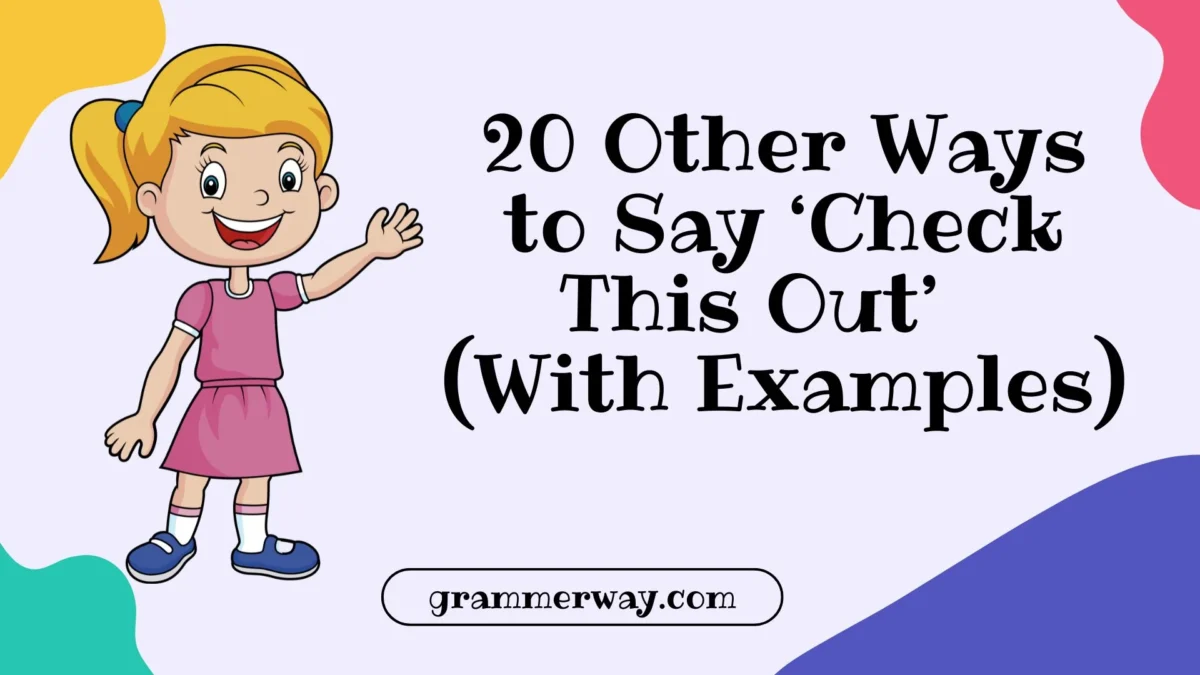
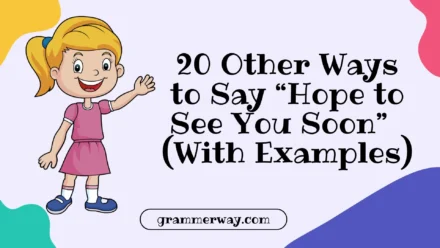
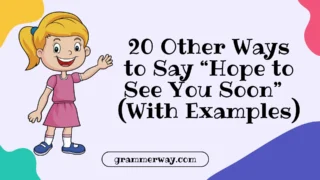
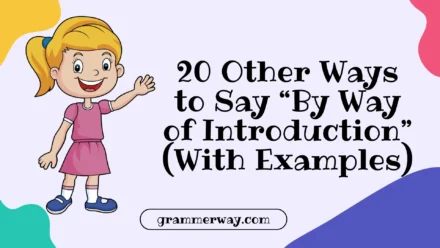
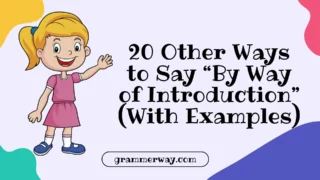
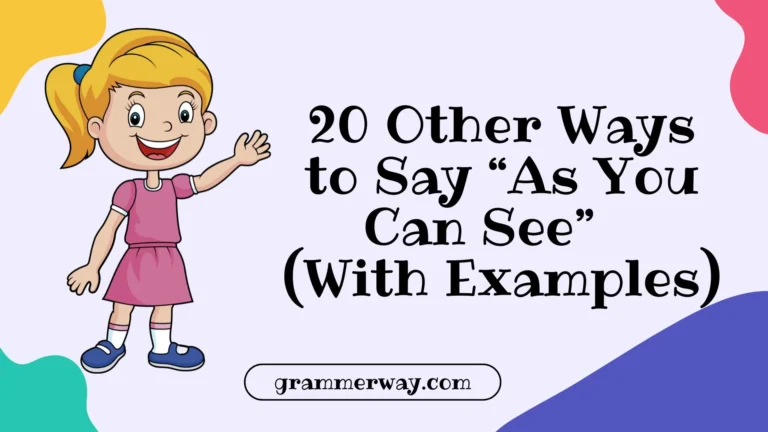

Leave a Comment